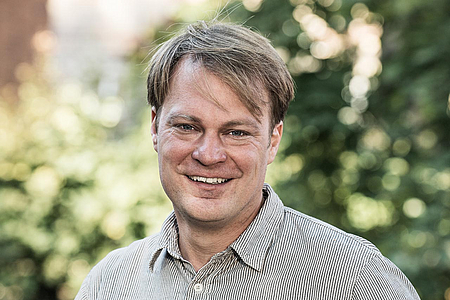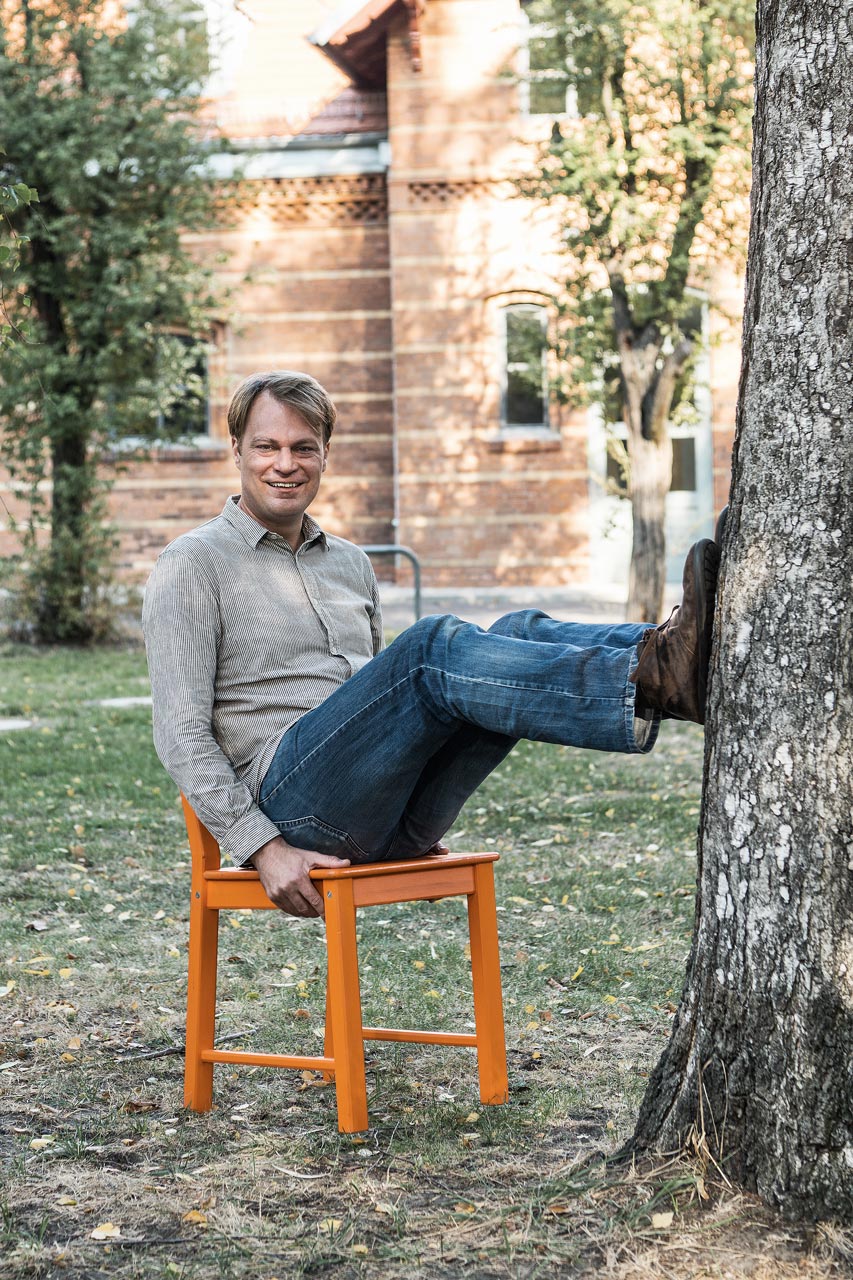Where construction projects in Berlin spark the change in science culture
On the North Campus of the Humboldt University, right next-door to the anatomical rooms of the Charité, there’s a lot going on. The construction cabins and cranes on the area of land, which extends idyllically over a small stream, have become a familiar sight by now. Although they do clash slightly with the earthy tones of the historical buildings and the colors of the trees in fall, they bring new life to the campus. Nils Blüthgen’s laboratory at the Integrative Research Institute of Life Sciences, the recent history of which is now only recognizable through the construction work in the auditorium, has blended in perfectly here.
Not too long ago, however, the premises that house a modern, fully equipped laboratory with several light-filled offices today were just a ruin. The laboratories, which contained equipment that in large part goes back as far as the 1950s, were last used by the Free University after the reunification of Germany and had been standing empty since then. After he was jointly appointed to work at the IRI Life Sciences and the Institute for Pathology by the Humboldt University and the Charité in 2014, Nils Blüthgen initiated the conversion work, supported by Stiftung Charité. Based on the idea of concentrating the scientific activities of both institutions in the field of bioinformatics and computational biology on the campus, he initiated the founding of a joint lab in the field of bioinformatics. Contrary to what one might expect of construction projects in Berlin, the joint efforts of the architects, the universities and Nils Blüthgen proved extremely successful.
The result clearly shows how interdisciplinary collaboration can be spatially implemented. Nils Blüthgen’s research team, which is stationed here, is studying how molecular networks interact in our cells in order to process signals. It specifically concerns signal networks that control cell division and survival. The structure of the Joint Lab enables us to look at entire networks in all their complexity, rather than just single signal paths. Based on data gathered from cell biology experiments, the research team creates computer models of the networks linking the signal paths. “Of course, I would first construct a car on the computer before producing an expensive prototype. In a similar way, we also use computer models to simulate the complex behavior of the cells. However, it is difficult to establish this kind of thing at universities, as they are still very much oriented towards disciplines,” explains Nils Blüthgen. He now wants to overcome the barriers between theory and experiment with the integrated laboratory.
The laboratory focuses mainly on signal networks, which are incapacitated in cancer cells, and which are already used clinically as a target for cancer therapies. It is evident that not only basic researchers, but also clinicians are integrated into the work, and in this respect being so close to the Charité offers a great advantage. “We have close contact with colleagues at the Charité, but sometimes our questions are quite different from those of a dyed-in-the-wool pathologist or oncologist. Experiments that are boring for them can be highly interesting for us,” explains Nils Blüthgen. It’s precisely because of these different viewpoints that many interesting interactions take place, as both sides complement one another well.

Funding program
BIH Investment Fund
Funding period
2015
Project title
Establishment of a Joint Lab Bioinformatics
Institution
Charité – Universitätsmedizin Berlin
Since 2014
Professor of Computational Modelling in Medicine, Charité – Universitätsmedizin Berlin and Integrative Research Institute for the Life Sciences (IRI Life Sciences)
2008 – 2013
Junior Group Leader and Junior Professor of the Institute of Pathology, Charité – Universitätsmedizin Berlin, and the Institute for Theoretical Biology, Humboldt University Berlin
2006 – 2008
Research Fellow at the Manchester Interdisciplinary Biocenter, Manchester, UK
At the Comprehensive Cancer Center of the Charité, patients already receive individual therapy decisions based on their genome sequence. This happens largely by means of hand-processed data. However, new technologies generate data volumes of such size that they can hardly be processed by humans. For this reason, together with colleagues from Informatics, one staff member of the Joint Lab is developing software that processes the data and, based on it, suggests therapy options to the doctors. For example, the computer can categorize how pathogenic mutations are. An algorithm then orders the results in such a way that the researcher only has to look at the most important ones.
Yet Nils Blüthgen doesn’t believe that one day, a computer will decide what therapy should be applied: “A computer can interpolate between things that it has already seen before and thus relieve human beings of boring work. This gives a person more time to look at the more interesting, more complex cases, which machine learning is unable to categorize.” In addition, there are factors that can’t be quantified, for example the overall condition of the patient or their family support.
The Joint Lab thus functions as the ideal interface between basic medical research and the clinic both on the content level and on the geographical level. Using modern technologies, it brings new life into the historical, listed building. It therefore not only benefits from the change that has been taking place on the campus for some years now, but also advances it further. As far as Nils Blüthgen is concerned, the exchange between the labs could be still more intensive in the future, particularly as he brings with him an enthusiasm for discussion from his time as a researcher in Great Britain:
"I was impressed by the fact that you could simply knock on the door somewhere and talk to someone about science, even while enjoying a beer in the evening. I’d like to see greater importance accorded to academic freedom and academic exchange in Germany too." The cranes and construction cabins show that the conversion is still far from finished and that the location still offers plenty of potential. As a result, every new building brings the campus new faces and new topics that offer material for future scientific exchange at events and meetings, or over a beer after work.
October 2018 / MM
